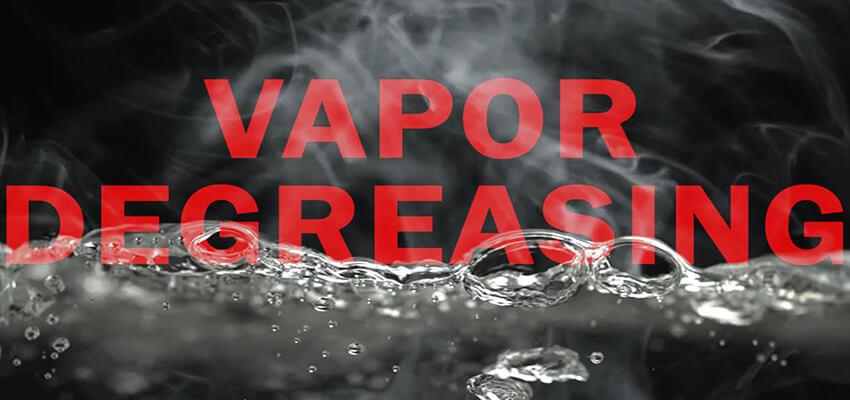Vapor degreaser equipment cleans by condensing solvents vapors on the object that it is cleaning. The process is used to clean various materials during manufacturing such as plastic, glass, metal, gold, and ceramic. For more information on the chemistries used for vapor degreasing, check out our vapor degreaser solvents.
Vapor degreasers use a closed-loop system that works very reliably and efficiently as long as it is set-up correctly. If not, you can experience solvent loss, equipment corrosion, loss of cleaning performance, etc.

When purchasing a new (or an additional) vapor degreaser machine, the location of the unit should be considered thoroughly to find the optimal positioning of the equipment. Following are some areas of concern to keep in mind.
-
Space requirements/clearance: Get the exact measurements of the unit from the manufacturer to ensure the area in question meets the space requirements for footprint and equipment access for operation/maintenance. These items include solvent loading/unloading, refrigeration repair, water removal, heating element removal, and (possibly) separate solvent distillation process. Clear access to all control panels, emergency shutdowns, and power supplies is a must!
Ceiling height may be a concern, especially with long vertical parts that must be processed. Robotic axis options for programmed basket/part movement into and out of the unit may be restricted by ceiling height and other overhangs. If so, some units are placed into a “pit” to solve this issue. Never install a vapor degreaser in an area near open flames, ovens, or where arc welding is performed.
- Elevation: Since many newer models are more efficient and compact compared to older models, this may not be an issue for you. However, elevation is ultimately determined by the height of the model and should be taken into account for safety requirements. Larger models may be fitted with stairs and rails to provide safe and convenient access.
- Process flow: It is always preferable to place the unit as close to the process area as possible to maintain flow integrity. However, this is dictated by facility layout and may not be possible.
- Drafts: Avoid cross drafts at all costs. This causes vapor removal/product loss resulting in exposure to employees as well as the financial implications. DRAFTS = SOLVENT LOSS. No drafts should be allowed around the entrance/exit working areas of the unit. Common areas of drafts include air conditioning ceiling registers, doors, windows, fans, or extraction vents. You may find it necessary to construct walls around the unit or place in a separate room.
- Ventilation: Since most vapor degreasing solvents commonly used today have vapors that are heavier than air, a floor draft that creates a laminar flow to carry or sweep the vapors is highly recommended.
- Humidity: Water vapor absorbed into the chemistry can be a major concern. Many of the modern formulas are halogenated and water entrainment can cause hydrolysis resulting in the associated acid being formed (“going acid”). If your facility is humidity controlled for ESD purposes, it will remain constant year-round and the technicians can trend the degradation of the material over time as well as keeping up with water removal. If the facility is not currently controlled, enclosing the unit in a humidity-controlled operation room should be considered.
- Pit Concerns: If the unit must be located in a recessed area or pit, a general rule of thumb is that if the pit is more than 2 feet deep, make provisions for it to be exhausted at a minimum rate of twice its air volume per minute. Ventilate at least 10 minutes before entering the pit area. (source: Baron Blakeslee, M-line Manual)
- Emergencies: Plan out emergency scenarios in the area for egress/ingress, placement of safety equipment such as eye wash stations, safety showers, fire extinguishers. Draw on such resources as the fire marshal and your insurance supplier for code and permit compliance.
These are just a few areas of consideration. Please consult the equipment manufacturer, your engineering staff, and consider local environmental and safety regulations to ensure your unit is placed in the most optimal location.
Techspray has a large variety of solvents intended for vapor degreaser solvents under the brand names PWR-4™ and Precision-V™. These products are engineered to be less toxic than many other solvents commonly used in vapor-degreasers: e.g. TCE (Trichloroethylene, CAS #79-01-6), nPB (n-Propyl Bromide, CAS #106-94-5), and Perc (Perchloroethylene, CAS #127-18-4).
Techspray has technical resources to help you evaluate and set-up your vapor degreaser machine. Contact us or give us a call or +31 088 130 7400 to get started.





